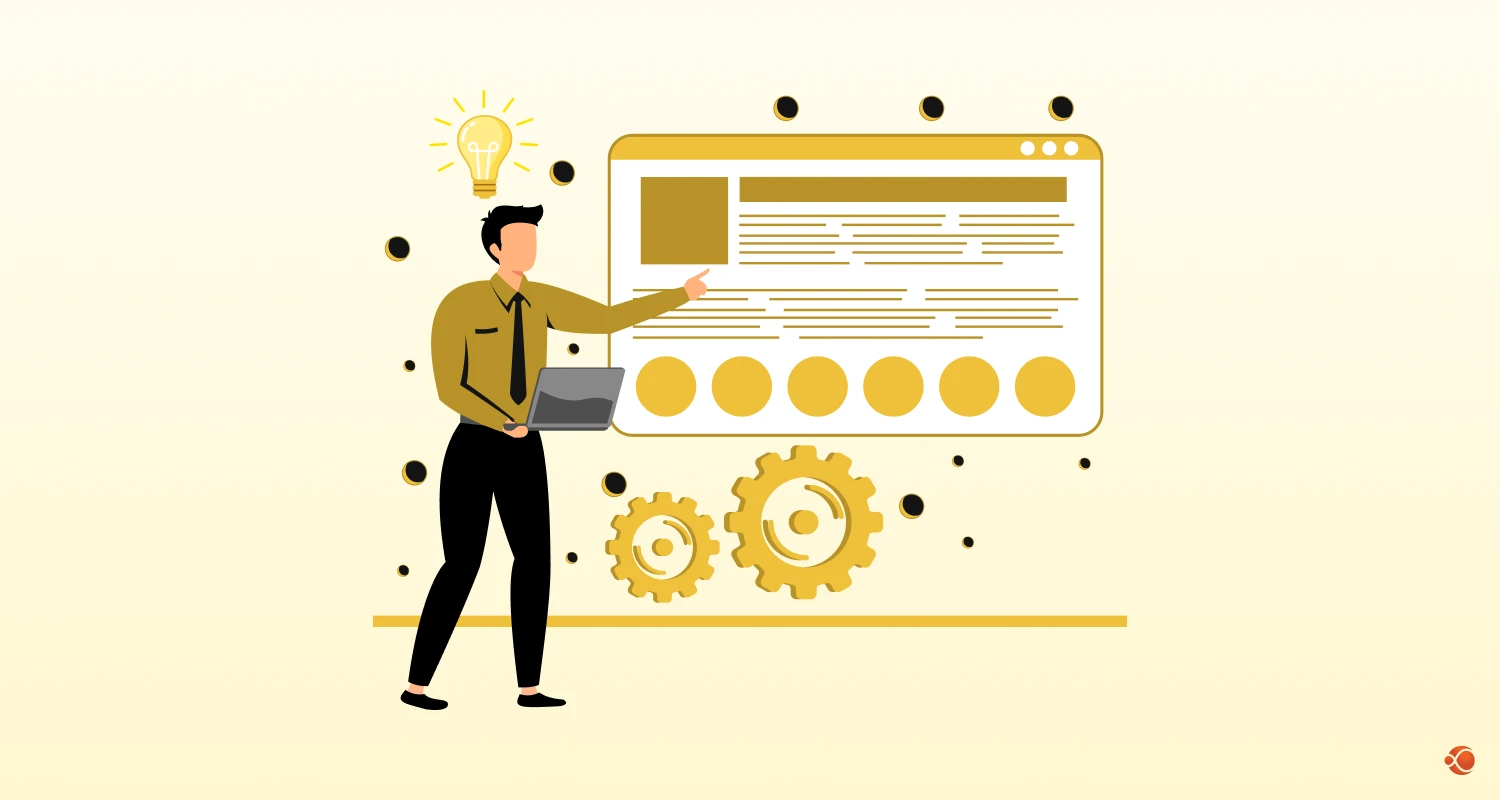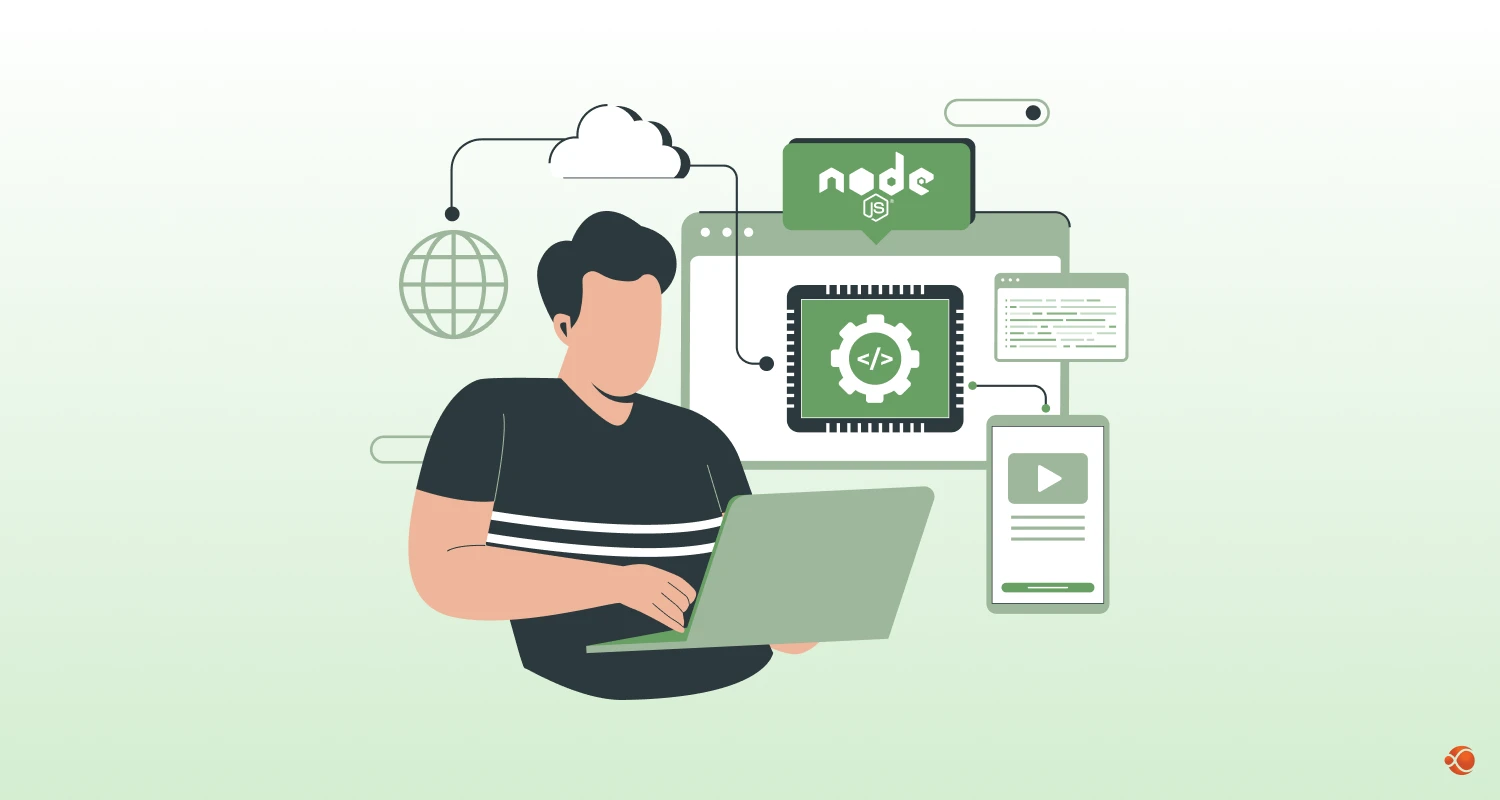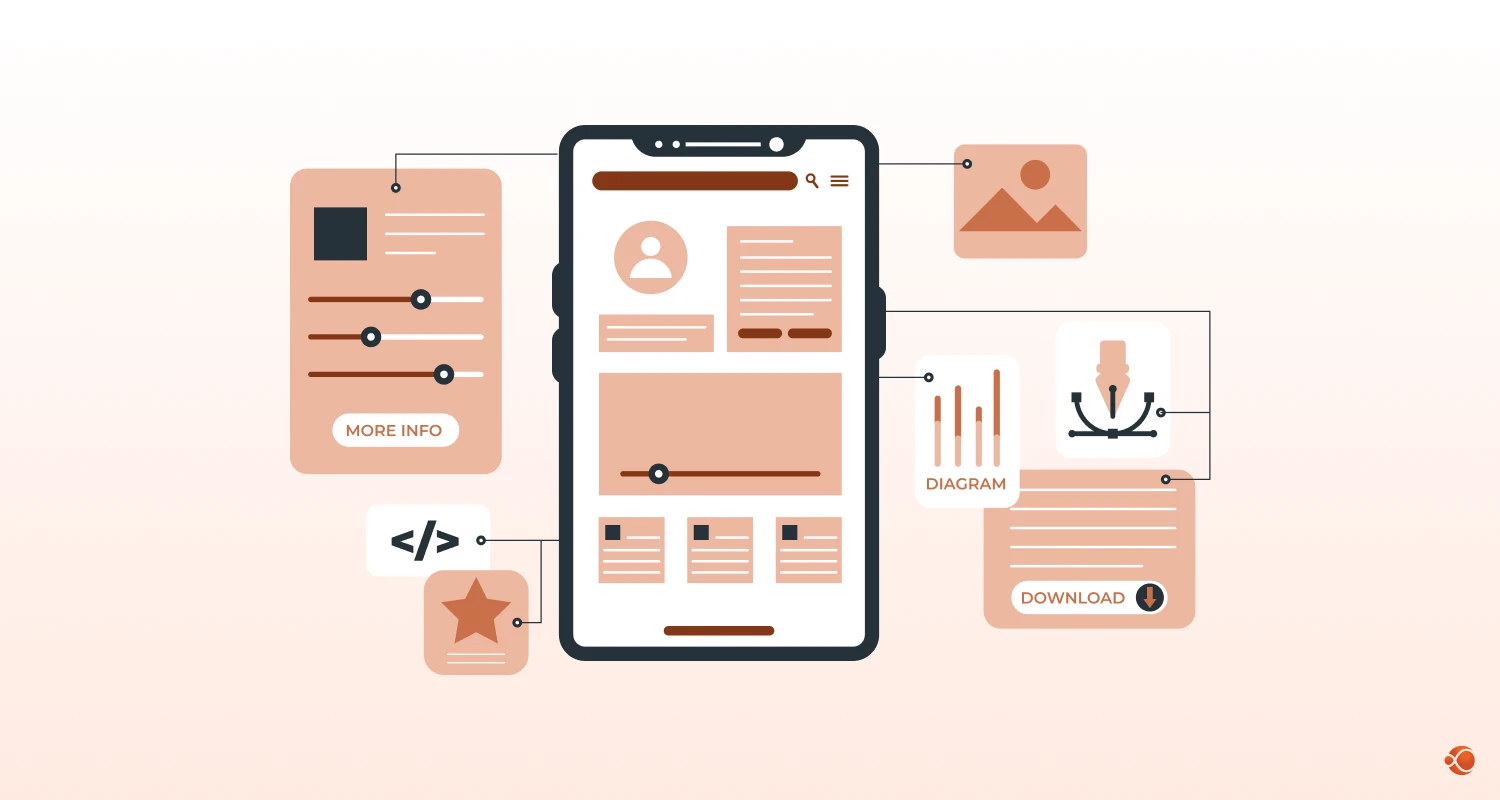Quick Summary: AI and RPA are reshaping how businesses operate by combining automation with intelligence. This blog explores their individual roles, synergy, real-world use cases, and how they drive smarter, faster, and more scalable business processes.
The business sphere is experiencing a transformational shift in the market, with new technologies emerging and becoming the norm every other day. Two of the most promising technology pairs that are in trend right now are AI and RPA. These are two powerful technologies, each with their own unique strengths. The market size for RPA is around USD 28.31 billion in 2025, and is expected to increase to USD 211.06 billion by 2034. More and more businesses are starting to see the value of bringing them together to completely reshape how operations and processes are managed.
And this isn’t just about making a few improvements here and there, it’s about creating a completely new way of working. They represent a complete shift toward more efficient, accurate, and scalable business operations that can actually keep up with today’s demanding digital economy.
What Makes RPA and Artificial Intelligence a Perfect Match?
The combination of RPA and AI creates an incredibly powerful partnership that fixes the problems with traditional automation approaches.
Here’s how they complement each other:
| Technology | Strengths | Best Use Cases |
| RPA | Excels at automating rule-based, repetitive tasks with structured data | Data entry, invoice processing, report generation |
| AI | Brings cognitive capabilities for unstructured data, decision-making, and pattern learning | Natural language understanding, image recognition, predictive analytics |
| Combined | Creates “intelligent automation” that adapts and learns | Complex workflows requiring both execution and decision-making |
This convergence creates what industry experts call “intelligent automation.” It’s basically a sophisticated approach that combines the precision of robotic process automation with the adaptability of machine learning.
Traditional RPA systems are built to follow set rules and structured workflows. They’re especially good at handling routine tasks that don’t change much from day to day.
For example, RPA is often used to:
- Enter data across multiple systems
- Process and approve invoices
- Generate and distribute reports automatically
- Integrate different systems and handle data migration tasks
But when you add AI capabilities to these systems, something amazing happens. With the right AI software development services, your software can suddenly understand natural language, recognize images, predict outcomes, and adapt to exceptions that would normally need human intervention. This artificial intelligence and RPA integration represents the next big step in business process automation.
The Difference Between RPA vs AI in Business Context

RPA – The Digital Worker
RPA is all about replicating the way people interact with digital systems. That means things like clicking buttons, typing in data, and transferring information between different applications. In a way, it acts like a digital employee — one that works around the clock, doesn’t get tired, and makes far fewer mistakes when handling repetitive, rule-based tasks.
AI – The Digital Brain
AI brings cognitive abilities to the table – things like NLP, computer vision, and predictive analytics. While RPA handles the “how” of getting tasks done, AI tackles the “what” and “why” by providing decision-making capabilities and insights from data patterns.
When these technologies work together in AI robotic process automation, you get systems that can both execute tasks AND make intelligent decisions about how those tasks should be performed.
Transforming Business Operations Through AI RPA Intelligent Automation
AI Process Automation: Beyond Traditional Boundaries
AI process automation represents a huge leap forward from conventional automation approaches. Organizations implementing this technology are discovering they can automate complex business processes that previously seemed impossible to streamline.
Take customer service operations, for example. You can now use AI to understand customer sentiment and intent, while RPA handles the actual processing of requests and updates across multiple systems. The customer gets faster service, and your team can focus on more complex issues.
When machine learning development services are combined with robotic process automation, you get systems that can actually learn and get better over time. They use past data and outcomes to fine-tune their performance, which means they don’t just automate tasks — they improve how they do them. This kind of self-learning makes the automation more accurate and efficient the longer it runs, cutting down the need for constant manual tweaks and upkeep.
Enterprise-Level Implementation Strategies
Implementing RPA in enterprise software environments takes careful planning and execution to get the most out of it without causing major disruptions to current operations.
Successful implementations typically start by identifying processes that are:
- Highly repetitive and rule-based
- Involve multiple systems or applications
- Have clear, documented procedures
- Generate measurable business value
- Currently consume significant human resources
These processes become the foundation for RPA AI business process automation initiatives that can deliver immediate value while building organizational confidence in the technology.
Enterprise leaders are increasingly recognizing that successful automation initiatives require specialized expertise. Many organizations choose to hire RPA developers and hire AI developers who can design and implement sophisticated automation solutions tailored to their specific business needs. These professionals bring essential skills in process analysis, system integration, and change management that are critical for successful deployment.
Strategic Implementation of AI and RPA Solutions
Building the Foundation with RPA Development Services
If your company is just getting started with automation, working with a reliable RPA development services company is a great first step. They can help review your current processes, find areas where automation can make a difference, and build solutions that fit your business needs from the beginning.
Experienced RPA teams have seen what works and what doesn’t across a range of industries. That insight helps organizations avoid common mistakes and get faster results. They also understand the complexities of different systems and know how to tackle the technical roadblocks that can slow down internal teams.
Maximizing ROI Through Strategic Planning
Successful AI and RPA implementations require more than just technical expertise. They demand strategic thinking about how automation will impact the entire organization. Companies that achieve the highest returns on their automation investments typically take a holistic approach that considers:
- Process efficiency improvements
- Employee experience and satisfaction
- Customer satisfaction and service quality
- Competitive advantage and market positioning
- Scalability and future growth potential
The most effective implementations focus on creating end-to-end automation workflows that span multiple departments and systems. This approach maximizes the benefits of intelligent automation by eliminating handoffs and delays that can occur when only portions of a process are automated.
Organizations also benefit from establishing centers of excellence that can share best practices and ensure consistent approaches across different business units. These centers can work as knowledge hubs and help maintain quality standards as automation initiatives scale across the enterprise.

Advanced RPA Applications and Use Cases
Different industries are leveraging RPA and artificial intelligence in different ways that address their specific challenges and opportunities.
Healthcare
In healthcare, AI-powered robotic process automation (RPA) is helping healthcare workers maintain patient records with greater accuracy and less effort, all while staying compliant with strict regulations like HIPAA. These smart systems can pull important details from medical documents, update information across different platforms, and even catch potential compliance issues before they become a problem.
Financial Services
In finance, companies are turning to AI and RPA to improve fraud detection and make routine transactions more efficient. AI reviews transaction data to spot anything unusual or suspicious.
Manufacturing
Manufacturing companies use AI-driven automation to prevent equipment failures before they happen. These systems look at sensor data, maintenance history, and machine performance to predict when something might go wrong. They can then schedule maintenance at the right time, which helps reduce unplanned downtime and keeps operations running smoothly.
Complex Decision-Making Scenarios
One of the most significant advantages of combining RPA with AI lies in handling complex decision-making scenarios that traditional automation simply cannot address.
Loan Approval Processes
These can now incorporate machine learning models that assess risk factors while RPA handles the actual processing and documentation. This combination makes it possible to make decisions more quickly without sacrificing accuracy or compliance. AI manages the heavy lifting when it comes to analyzing things like credit scores, income verification, and current market conditions. At the same time, RPA takes care of collecting documents, running verification steps, and managing communication throughout the approval process.
Customer Onboarding
These processes represent another area where artificial intelligence and RPA deliver exceptional value. AI can analyze documents and extract relevant information, verify identities through facial recognition or document analysis, and assess risk profiles based on multiple data sources. RPA manages the workflow across multiple systems and generates necessary communications and documentation.
Future Trends and Evolution of AI and RPA
The Future of RPA in an AI-Driven World
The future of RPA is intrinsically linked to advances in AI and ML technologies. As AI capabilities continue to expand, even more advanced forms of intelligent automation that can handle increasingly complex business scenarios.
Key developments to watch:
- Natural language processing improvements will enable RPA systems to interact more naturally with both structured and unstructured data sources
- Computer vision advances will allow better document processing and image recognition capabilities
- Predictive analytics will enable proactive automation that anticipates needs rather than just responding to them
- Conversational AI will create more intuitive interfaces for managing and configuring automation workflows
Edge computing and 5G networks will enable real-time processing capabilities that make AI robotic process automation even more responsive and effective. Organizations will be able to implement automation solutions that can react instantly to changing conditions and make decisions based on real-time data analysis.
Preparing for Next-Generation RPA Automation with AI
Here is a checklist to prepare your business for RPA and AI based automation:
- Investing in cloud-based platforms that can easily integrate new AI capabilities
- Developing internal expertise through training and hiring initiatives
- Establishing governance frameworks that can adapt to evolving technologies
- Creating data strategies that support both current and future automation needs
- Building change management capabilities to handle ongoing technology evolution
The most successful organizations will be those that view AI and RPA not as isolated technology implementations but as part of a broader digital transformation strategy. This approach requires strong leadership commitment, clear communication about goals and expectations, and ongoing investment in both technology and human capabilities.
AI and RPA Implementation Best Practices and Success Factors
Building Internal Capabilities
While many organizations start their automation journey by working with external providers, building internal capabilities is essential for long-term success. This includes developing teams that understand both the technical aspects of machine learning and robotic process automation and the business processes they’re designed to improve.
Key areas for internal capability development:
- Technical skills in RPA platform configuration and management
- AI and ML model development and deployment
- Process analysis and workflow design
- Change management and user adoption strategies
- Data governance and security practices
- Performance monitoring and optimization techniques
Companies should train their existing employees as well as hire skilled RPA developers with the needed skillsets. This dual approach ensures continuity while bringing in fresh perspectives and cutting-edge expertise.
Creating a culture that embraces automation is equally important. This involves communicating clearly about how automation will augment rather than replace human workers, providing training and development opportunities for employees whose roles will change, and celebrating successes that demonstrate the value of intelligent automation initiatives.
Measuring Success and Continuous Improvement
Successful RPA AI business process automation implementations require robust measurement and monitoring frameworks. Organizations should establish clear metrics that go beyond simple cost savings to include:
Operational Metrics:
- Process cycle time reduction
- Error rate improvements
- Volume processing capacity increases
- System uptime and reliability
Business Impact Metrics
- Improvements in customer satisfaction
- Higher employee engagement and morale
- Positive effects on revenue and overall business growth
- Stronger competitive positioning in the market
Quality Metrics
- Better accuracy in processes and outputs
- Higher compliance with regulations and standards
- Reduced business and operational risks
- More effective audits and stronger internal controls
Regular reviews and assessments help identify opportunities for optimization and expansion. These reviews should involve both technical teams and business stakeholders to ensure automation continues to deliver value and align with evolving business needs.
Conclusion: Embracing the Automation Revolution
The combination of AI and RPA is shaping up to be one of the biggest opportunities for business transformation in years. Companies that know how to use these technologies effectively can gain a real competitive edge by working more efficiently, reducing errors, and responding faster to changes in the market.
Looking ahead, intelligent automation is only going to get smarter and more powerful. Businesses that take the initiative now with solid planning and thoughtful execution will be in the best position to take full advantage of what’s coming. It all starts with having a clear vision, building a strong foundation, and staying flexible enough to adapt as the technology continues to grow and evolve.
FAQs on AI and RPA Integration
What is AI and RPA?
AI (Artificial Intelligence) refers to computer systems that can perform tasks typically requiring human intelligence, such as decision-making, pattern recognition, and language processing. RPA (Robotic Process Automation) uses software robots to automate repetitive, rule-based tasks like data entry, form processing, and system navigation.
What is the Difference Between AI and RPA?
RPA follows pre-programmed rules to automate structured, repetitive tasks without learning or adapting. AI can learn from data, make decisions, handle unstructured information, and adapt to new situations, making it suitable for complex problem-solving.
How Do AI and RPA Work Together in Business Operations?
RPA handles the mechanical execution of tasks while AI provides the intelligence for decision-making and data analysis. Together, they create “intelligent automation” where RPA bots can process exceptions, learn from patterns, and make smarter decisions during workflow execution.
Can Small and Medium-Sized Businesses Use AI and RPA?
Absolutely, cloud-based platforms and low-code/no-code solutions have made these technologies accessible and affordable for SMBs. Many vendors offer scalable pricing models and pre-built solutions that don’t require extensive technical expertise to implement.
How Do You Integrate AI Capabilities With Existing RPA Solutions?
Integration typically involves adding AI modules or APIs to existing RPA workflows through connectors and plugins. Most modern RPA platforms support AI integration through drag-and-drop interfaces, allowing bots to call AI services for tasks like document processing, sentiment analysis, or predictive decision-making.







